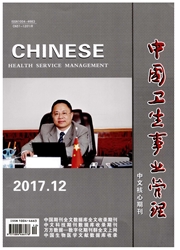

 中文摘要:
中文摘要:
通过对北京和山西两地居民基本社会医疗保险选择意愿的调查分析,对政府卫生支出进行估算,探索经济发展水平不同地区建立城乡统筹的基本社会医疗保险的必要性和可行性。运用2011年的实证调查数据,采用交叉列联表、回归分析等统计方法,分析、对比北京、山西居民对基本医疗保险的选择意愿及其人口学因素,估算统筹城乡医保后两地政府卫生支出的变化。结论是:按照户籍、是否就业划分的医保制度在两地均不能满足所有居民的医保需求;影响两地医保选择的共同人口学变量有户籍、是否有商业保险、家庭人数、家庭年收入;若允许居民自由选择现行三大医保,北京市需多投入119.929亿元,山西省政府可节约109.815亿元。在经济发展水平不同的京、晋两地将现行三种基本社会医疗保险制度转化为统一制度下的三种医保水平并允许居民自由选择,可以取得事半功倍的效果。
 英文摘要:
英文摘要:
This paper explores the necessities and feasibilities of establishing an urban-rural coordinated basic social medical insurance in regions with different economic development levels by analyzing residents' willingness of choosing medical insurances and calculating the government health expenditure in Beijing Municipal and Shanxi Province.Based on the survey data in 2011,this paper analyzed and compared residents' willingness of choosing basic medical insurances and its influential demographic characters and calculated the government health expenditure after built urban-rural coordinated medical insurance system in Shanxi and Beijing by using the method of contingency table and logistic regression.The current social medical insurances which based on household couldn't meet the needs of all residents;household,commercial medical insurance, household size and family annual income were the common demographic characters that influenced choice of residents on medical insurances in the two regions;Beijing Municipal government needed to spend another 11992.9 million Yuan and Shanxi Province government could save 10981.5million Yuan,if the medical insurances in each region reached the current average level of Beijing Municipal and the residents were allowed to choose medical insurances freely.It is necessary and feasible to integrate the current three basic medical insurances into three different medical insurance levels under a unified system and allow residents to choose freely in Beijing and Shanxi which are the regions with different economic development levels.
 同期刊论文项目
同期刊论文项目
 同项目期刊论文
同项目期刊论文
 期刊信息
期刊信息
